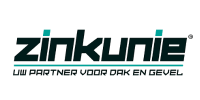Why do organizations need IT management solutions?
In an increasingly digitized world, IT infrastructure has become the lifeblood of businesses. Enterprise networks, virtual and physical servers, and storage devices are the critical components of this infrastructure. Gaining a deep understanding of the availability and performance of these elements is critical to ensuring business continuity and gaining competitive advantage. In this article, we explore how to gain end-to-end visibility into your IT infrastructure through effective monitoring and management.

End-to-End
IT Insight for Stability and Performance
Gaining end-to-end visibility into your IT infrastructure is a crucial step in ensuring business stability and performance. With the right monitoring and management tools, you can proactively address issues, minimize potential downtime and make your business more agile and competitive in the rapidly changing business environment:
Monitoring Network Availability
Minimize outages through continuous network monitoring, enabling proactive outage response with real-time performance data and data traffic information.
Performance Monitoring of Servers
Optimal server performance requires constant monitoring of CPU, memory and storage capacity to avoid bottlenecks and maintain performance criteria.
Storage management for data integrity and capacity
Storage management for data integrity and capacity: Implement monitoring tools to receive timely alerts on critical storage capacity.
Realtime Notifications
Set real-time notifications for all monitored elements so that you are immediately notified of any issues. This enables your IT team to respond quickly and minimize potential downtime.
Historical Data Analysis
Historical data reveals trends and optimization opportunities for capacity planning and actual performance data for informed decision making.
Scalability and Flexibility
Choose flexible monitoring tools that grow with your business as the IT infrastructure evolves and expands.
Security and Compliance
Monitoring and management tools must meet security and compliance requirements, especially GDPR, to protect sensitive data and comply with regulations.







































